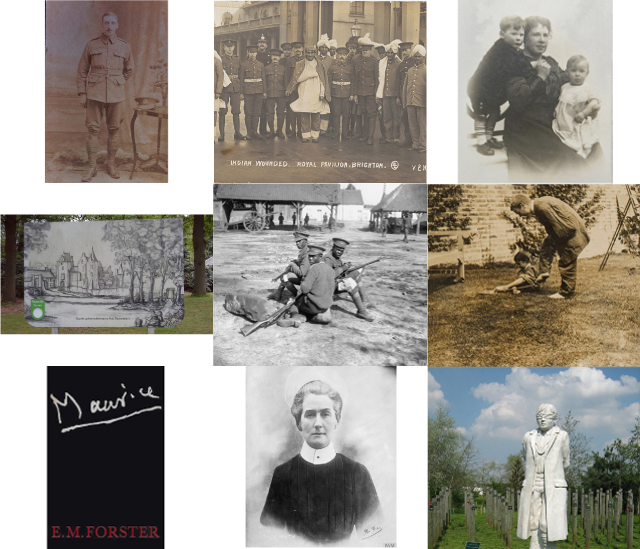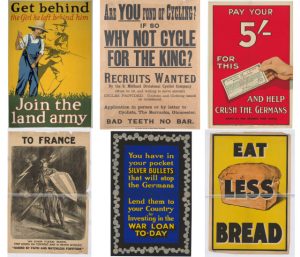On 4 August 2017, the East Sussex WW1 project celebrated its third anniversary. Here we look back upon the third year of the project.
We launched our website on 4 August 2014 (to coincide with the centenary of the start of the First World War) and, in the first and second years of the East Sussex WW1 project we delivered substantial achievements. During the first two years of the project we published 172 stories and events. Of these 64% came from the general public. We released digitised copies of the local newspapers; Eastbourne Gazette, Eastbourne Chronicle, Hasting & St Leonards Observer, and the Hastings & St Leonards Pictorial Advertiser covering the First World War period. For our 2nd anniversary we followed this up with digitised copies of the Sussex Daily News. Alongside this we Released our first educational resources for students and teachers.
We created and held ceremonies to unveil three new war memorials in honour of East Sussex soldiers (Cuthbert Bromley, Sidney Woodroffe, and Nelson Carter) who were awarded the Victoria Cross during the war.
For our third year, we aimed to continue the progress we had already made, introduce exciting new material, and also reflect on some of the stories we have featured in the past.
Stories, Events and Statistics
During the third year of our project we published 22 new stories and 19 new events to the website. 53% of this new content was submitted by members of the public.
There were a number of key centenary anniversaries for the First World War during the end of 2016 and the first 8 months of 2017 and we expanded our view beyond East Sussex to the wider global events of the war to help add context to our content.
In November 2016, we marked the United States of America’s Presidential election of 2016 by looking back at Woodrow Wilson’s election campaign of 1916. This was the first in a number of stories about the American entry into the First World War which also included an article on the ‘Zimmerman Telegram‘ that brought America into the war and an article in June 2017, marking the arrival of the first American soldiers in France.
The Russian Revolutions began on 3 March 1917, and we marked this date with our own story chronicling the dramatic events in Russia. Also during March 2017, we once again celebrated Women’s History Month and turned the front page of our website and the content of our Twitter account over to highlighting our stories on women’s experience during the First World War. We also published a new story on the Women’s Army Auxiliary Corps. Over the course of March our website was viewed 8,274 times, an 82% increase on the previous year.
Closer to home, we published new stories on alcohol restrictions in East Sussex during the First World War, a story commemorating the East Sussex men lost at the Battle of Aubers Ridge, and a story featuring Kieron Pelling‘s astonishing ‘Then and Now’ photos on the Hastings Pier fire in 1917. This story was also featured on ITV Meridian News.
In June 2017 we published a new story on attitudes towards conscription during the First World War, drawing upon the records of Mass Observation held by the University of Sussex at The Keep. This new article allowed us to hold a ‘Supporting the War Effort’ week through our twitter account to highlight the various ways people in East Sussex assisted and reacted to the ongoing conflict.
Most excitingly, however, was the fact that our recent story on the beginning of the Third Battle of Ypres (also known as The Battle of Passchendaele) was the 150th story published on our website.
Over the course of our third year, our website has been viewed over 80,000 times and we are about to reach 200,000 views over the life of the project.
New Resources
At the start of February 2017 we published new educational resources on our website. This saw the creation of two new categories for our educational resources; ‘places’ and ’empire’.
We added three stories on each of these topics to our collection with versions available for teachers and different versions for students. Each of these stories focuses either on specific places in East Sussex or on soldiers from across the British Empire who passed through East Sussex during the First World War.
At the end of June we also unveiled a brand new section of our website containing digitised copies of First World War posters. These posters had been found by the East Sussex Library Service and temporarily granted to us in order to scan them and make them freely available on our website. The posters themselves are broken down into four categories: ‘Soldiers, Service and Recruitment’, ‘Women’, ‘Economy’, and ‘Food’.
In total, 42 posters are hosted in this new section and all are available to be downloaded for free.
Granting a platform
As we began the process of looking back on our third year, we reflected on the stories that we had published and featured that granted a platform or a voice to those whose stories are often overlooked.
There are many stories to tell about the First World War and with just over 150 stories on our website we had a good collection to consider. The East Sussex WW1 project team took the time to go back through these stories and choose our favourite stories that we have given a platform to.
Chris Kempshall – Project Officer for First World War Commemorations
1. Gypsy Traveller Community in WW1: This is a story I always think of when I consider who we’ve helped give a voice to. The Gypsy Traveller community has often been accused of not serving their country during the world wars and, because of their way of life, firm records are sometimes difficult to find. Janet Keet-Black’s story tells the stories of the Gypsy Traveller men who served and sacrificed during the First World War.
2. West Indian Soldiers in Seaford: West Indian soldiers were trained and based out of Seaford during the First World War. Understanding the lives and experiences of these men from the Empire as well as their and post-war treatment is a hugely important aspect of understanding how the British Empire went to war. It is a story that should be told and remembered.
3. Shot at Dawn: This is a story I have previously highlighted as being a favourite of mine. Telling the stories of soldiers is an important part of being a First World War historian, but some stories are harder to tell than others. The stories of those men who were court martialled by the British army and then executed by firing squad are still controversial today. But understanding how and why such things happened, and identifying the men who died in this way, is a story worth telling.
Lee Banner – Policy Officer, East Sussex County Council
1. Indian Soldiers in East Sussex: This story highlights how a wonderful Brighton landmark – the Royal Pavilion – played its part in the war effort and I had never heard reference to “khaki fever” before this story.
2. Educative Convalescence at Chailey Heritage: This story of children sharing their skills, knowledge and experience with wounded servicemen is inspiring and shows the intergenerational war effort at its best.
3. Homosexuality in the First World War: My colleague Beth’s research and writing shines a light on the details of lives that are not well known or easy to come by. This is a great piece setting out the everyday lived experience.
Beth McGhee – Policy Development Officer, East Sussex County Council
1. British Nannies in Great War Sussex: This story provides an account of the small gestures of kindness made by Britons for Belgian refugees in WW1, a part of our heritage that I think we should be proud of. The story also demonstrates the way that people at home adapted their lives to account for the consequences of WW1.
2. What happened to Kaiser Wilhelm?: Before I read this story I’d never actually considered what happened to Kaiser Wilhelm after WW1. I’m particularly pleased that this story was contributed by a local history group, as the website was in part set up to enable communities to share new perspectives on commemorating WW1.
3. Edith Cavell’s Railway Van: This story demonstrates how important and well-known national events have local ties, a theme in many of the stories on our website.
The future
As we enter into the final year of our project we are already beginning to explore new resources, material, and stories.
There is one final Victoria Cross Paving Stone to be laid in East Sussex and it will commemorate Claude Nunney in Hastings, following the stones to commemorate Cuthbert Bromley, Sidney Woodroffe, and Nelson Carter.
With the Centenary of the war’s end coming in 2018, there are many more important stories to tell about how the conflict played out both abroad and in East Sussex.
Our project will end in November 2018, and we will shortly begin the process of securing its legacy. At the conclusion of the project the website and all its material will be moved over to the database and website of The Keep to ensure that it remains as a resource for studying the First World War in East Sussex for years to come.
We’re very excited about the year ahead and hope you will join us for it.










